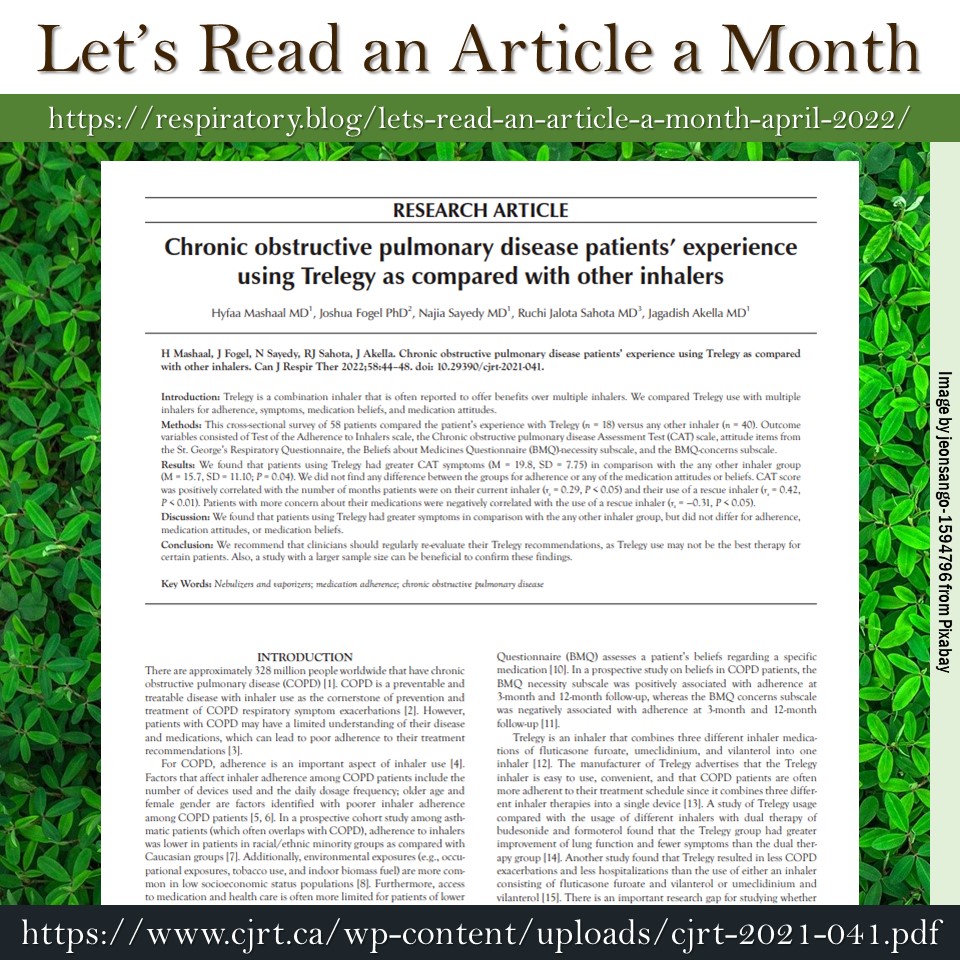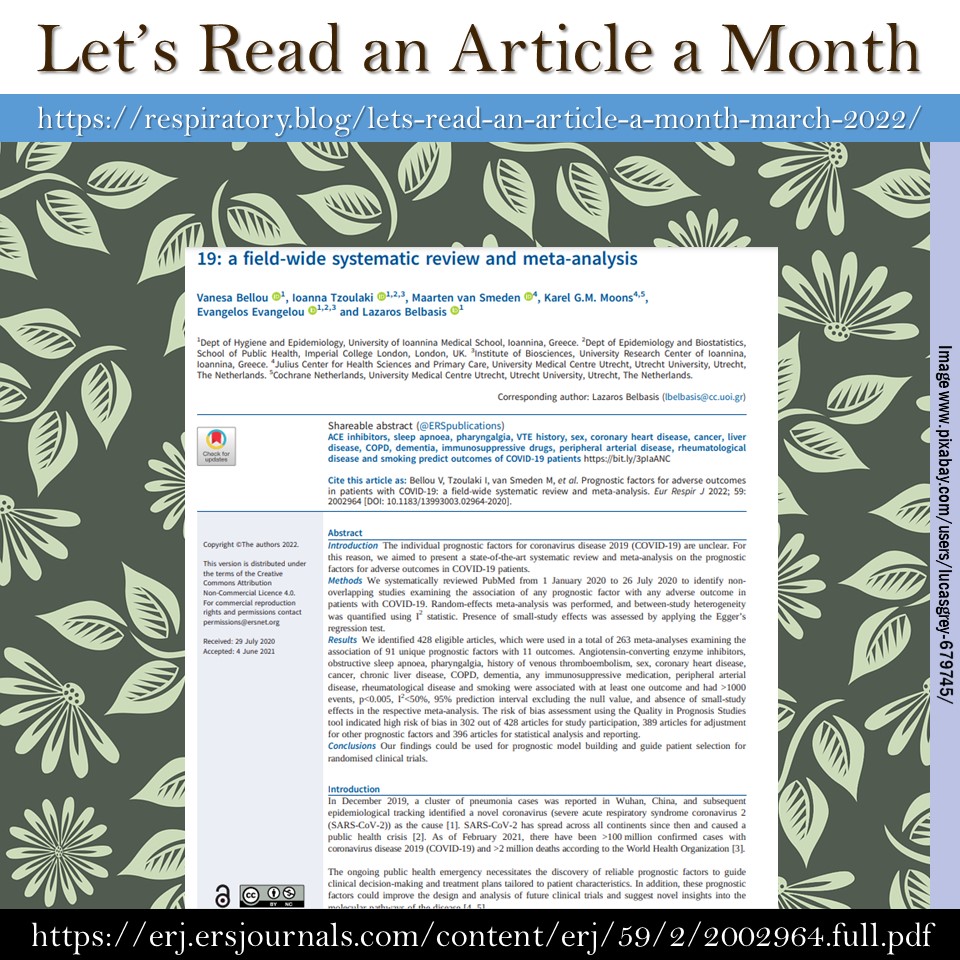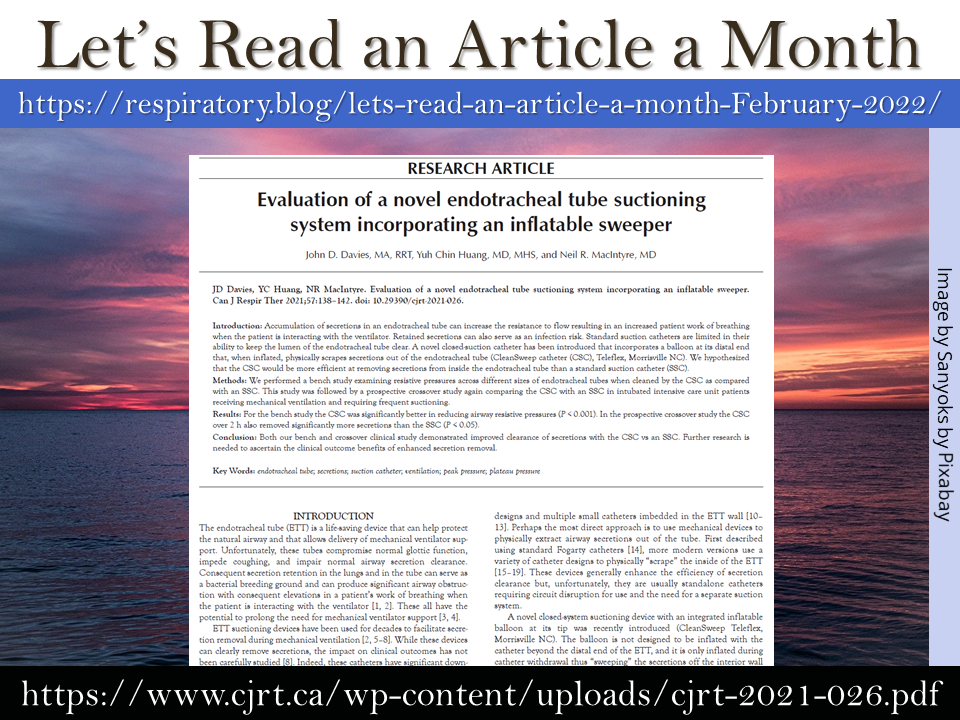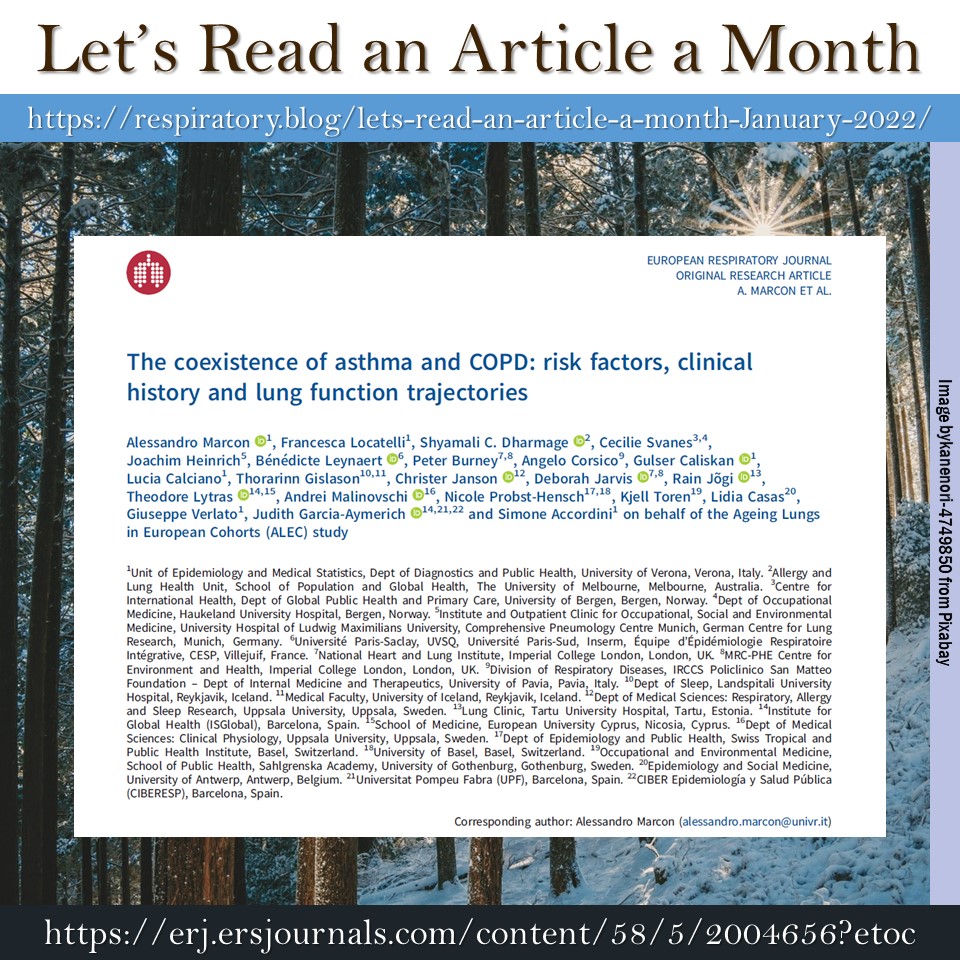https://www.csrt.com/call-for-nominations-csrt-board-of-directors/#elections

Respiratory Therapy by Farzad Refahi
With a goal of improving the life of healthcare providers as individuals and as clinicians.

Every month I read an open-access article. I share the title and associated link with my followers to encourage clinicians to read more articles, stay up to date, and continue to grow.
The objective of this month’s paper is to “discover whether there is any difference for Trelegy as compared with multiple inhalers use for adherence, symptoms, medication beliefs, and medication attitudes” (p45).
By Hyfaa Mashaal, Joshua Fogel, Najia Sayedy, Ruchi Jalota Sahota and Jagadish Akella.
Can J Respir Ther Vol 58. Published online at https://www.cjrt.ca on 25 March 2022
Link to the article: https://www.cjrt.ca/wp-content/uploads/cjrt-2021-041.pdf
Happy reading and learning,
Farzad Refahi
April 1st, 2022
https://respiratory.blog/lets-read-an-article-a-month-april-2022/

Every month I read an open-access article. I share the title and associated link with my followers to encourage clinicians to read more articles, stay up to date, and continue to grow.
The objective of this month’s paper is to [conduct a comprehensive systematic review, critical appraisal and meta-analysis of all prognostic factories in patients with COVID-19] (p2).
By Vanesa Bellou, Ioanna Tzoulaki, Maarten van Smeden, Karel G.M. Moons, Evangelos Evangelou and Lazaros Belbasis
European Respiratory Journal 2022 59: 2002964; DOI: 10.1183/13993003.02964-2020 https://erj.ersjournals.com/content/59/2/2002964
Link to the article: https://erj.ersjournals.com/content/erj/59/2/2002964.full.pdf
Happy reading and learning,
Farzad Refahi
March 2, 2022
Let’s read an article a month – March 2022

Every month I read an open-access article. I share the title and associated link with my followers to encourage clinicians to read more articles, stay up to date, and continue to grow.
This month I found an interesting piece to share with you. This one falls under the innovation category and is about a product called CleanSweep. The objective of this paper is to introduce CleanSweep and assess “whether the CleanSweep suction catheter is more efficient for secretion removal than the standard suction catheter” (p.138). To give a quick description, CleanSweep is a “closed-system suctioning device with an integrated inflatable balloon at its tip. … The balloon is not designed to be inflated with the catheter beyond the distal end of the ETT, and it is only inflated during catheter withdrawal thus “sweeping” the secretions off the interior wall of the ETT” (p.138)
Before you continue, I would like to add a quick disclaimer that this is not an endorsement or a sponsored blog post. Please continue to use products that have been approved by your employer.
By John D. Davies, MA, RRT, Yuh Chin Huang, MD, MHS, and Neil R. MacIntyre, MD.
Can J Respir Ther 2021;57:138–142. doi: 10.29390/cjrt-2021-02
Link to the article: https://www.cjrt.ca/wp-content/uploads/cjrt-2021-026.pdf
Happy reading and learning,
Farzad Refahi
Feb. 6, 2022
https://respiratory.blog/lets-read-an-article-a-month-february-2022/

Every month I read an open-access article. Then, I share the title and associated link with my followers. This is to encourage clinicians to read more articles, stay up to date, and continue to grow.
By: Alessandro Marcon, Francesca Locatelli, Shyamali C. Dharmage, Cecilie Svanes, Joachim Heinrich, Bénédicte Leynaert, Peter Burney, Angelo Corsico, Gulser Caliskan, Lucia Calciano, Thorarinn Gislason, Christer Janson, Deborah Jarvis, Rain Jõgi, Theodore Lytras, Andrei Malinovschi, Nicole Probst-Hensch, Kjell Toren, Lidia Casas, Giuseppe Verlato, Judith Garcia-Aymerich, and Simone Accordini on behalf of the Ageing Lungs in European Cohorts (ALEC) study
European Respiratory Journal 2021 58: 2004656; DOI: 10.1183/13993003.04656-2020
Link to the article: https://erj.ersjournals.com/content/erj/58/5/2004656.full.pdf
A detailed study with around 20 years of medical history. A large number of individuals [14864, 9251 and 6122, respectively in ECRHS I, II and III who underwent clinical examinations, from 23 centres] (p4). Useful observations were presented based on past asthma, current asthma, asthma + COPD, and COPD alone. A recommended article to students, new RRTs and even experienced clinicians. There are many results, findings and conclusions that I cannot cover in a post. As always, I recommend that you read the full article for yourself.
”Lung function decline for subjects with asthma + COPD could have been mitigated by long-term anti-inflammatory treatment. “ (p9).
“The coexistence of asthma and COPD seems to be a form of severe asthma with severe asthma with origins early in life, as opposed to COPD alone, which is more linked to adult exposures.” (p10).
”…COPD without concomitant features of asthma seems predominantly linked to adult-life toxic inhalant exposures. Exposure avoidance (e.g. through smoking cessation and reduction of pollution exposure in occupational settings) may be particularly beneficial against the development of the “pure COPD” phenotype…” (p10).
Happy reading and learning.
Farzad Refahi
January 01, 2022
Link to the blog post: https://respiratory.blog/lets-read-an-article-a-month-January-2022/